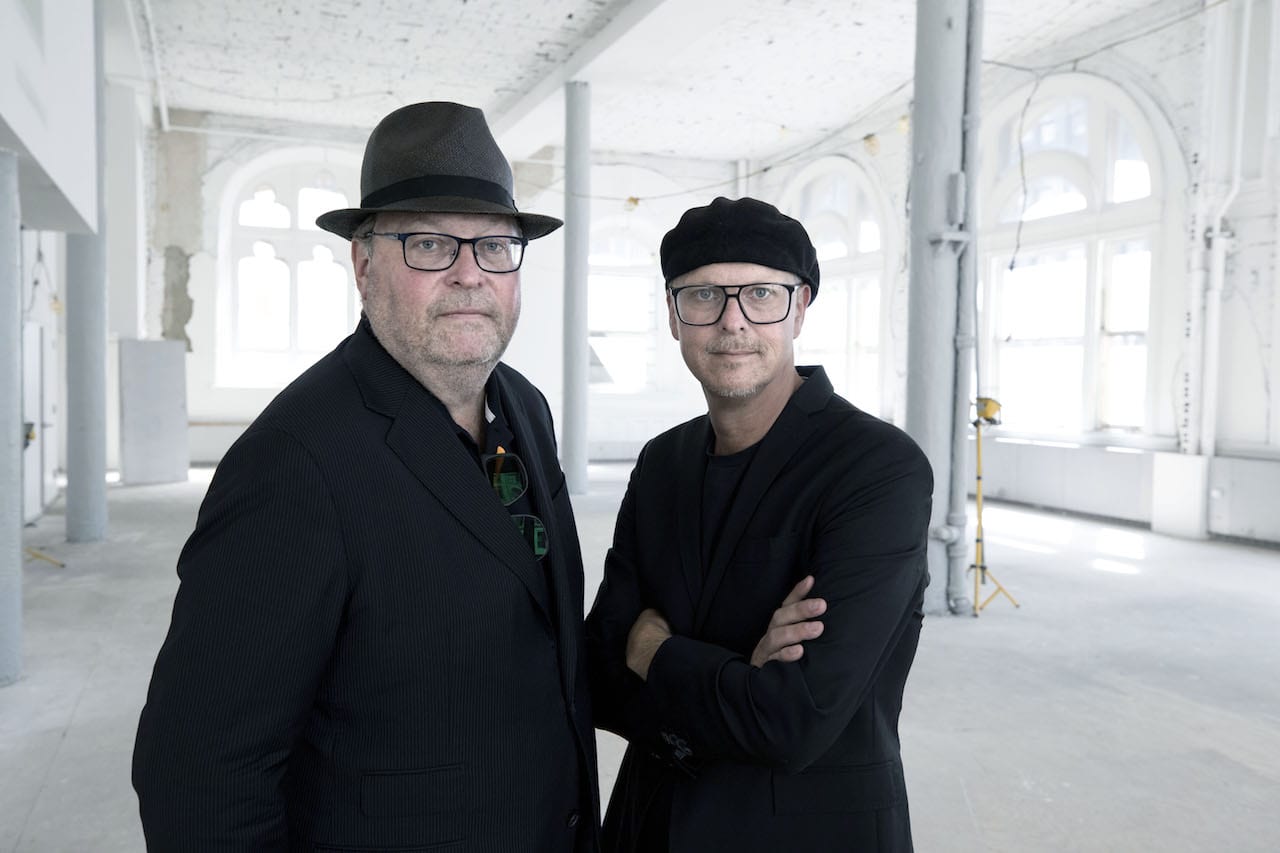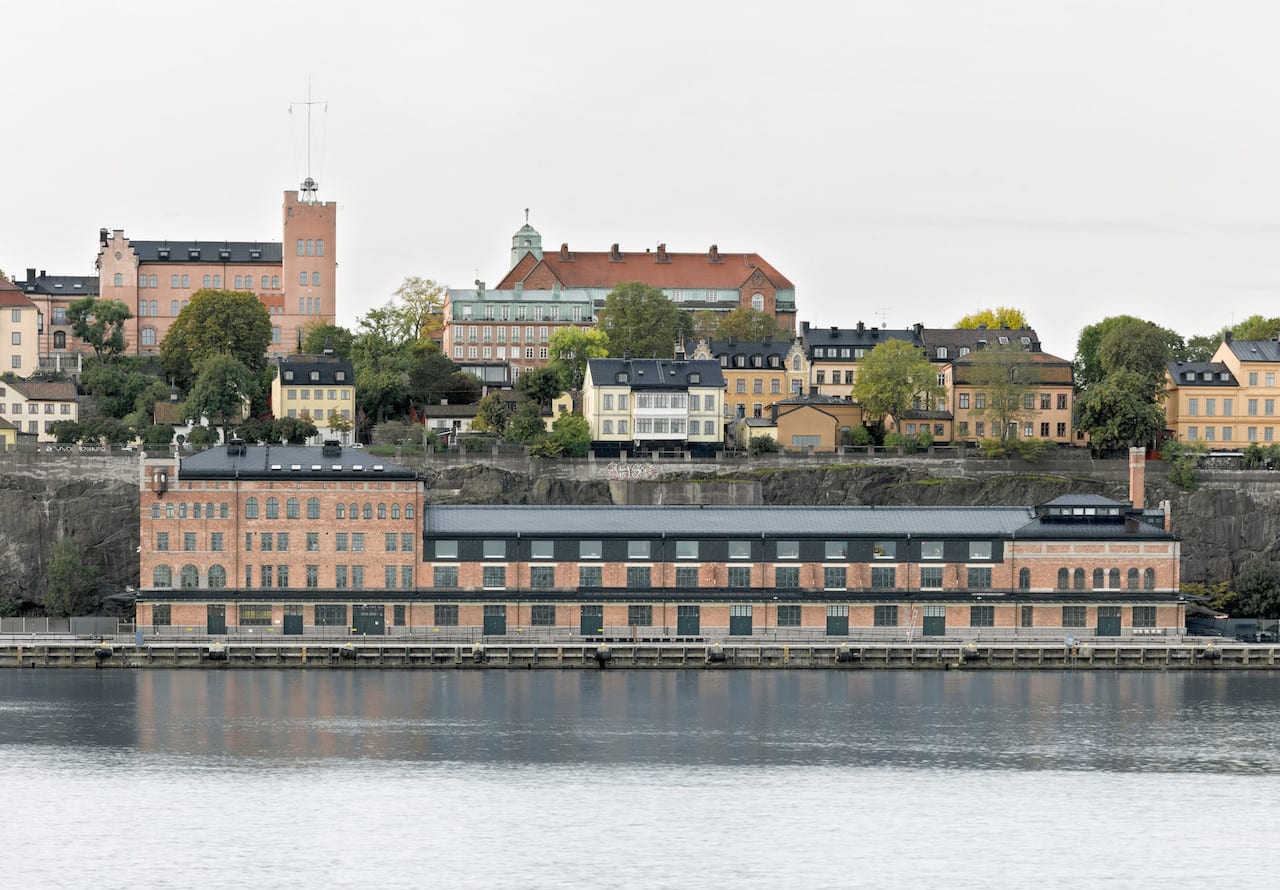Situated on the harbour in the Stadsgårdskajen district of Stockholm is the privately-owned and commercially-run photography centre Fotografiska. A self-styled museum housed in an impressive and beautifully-renovated former customs house, built in 1906 in the Art Nouveau style, Fotografiska opened in 2010, and has since exhibited the work of renowned photographers such as Annie Leibovitz, Joel-Peter Witkin, Anders Petersen, Sarah Moon and Christer Strömholm, to name but a few. Two of the most recent solo exhibitions were of the photojournalist Paul Hansen and the fashion and art photographer Viviane Sassen.
Such is the success of Fotografiska that the museum is now set to open two new galleries, with others planned for the future. New York will be first, then London – and the plans for London would make the world’s largest photography gallery. It’s a move that surprised many in photography, and yet the founders of Fotografiska, the brothers Jan and Per Broman, have a long history with the photography industry.
“Our passion for photography comes from our childhood,” says Jan. “Our father was a printer for Sweden’s main newspaper, Dagens Nyheter, and he built a darkroom at home. My brother was a photographer, and I worked in a photography lab for many years. Our appreciation of photography was strong and we understood that there was no space in this city that really brought the biggest photographers to Stockholm, and so this is what we wanted to do.”

On the top floor of this museum, we sit in the cafe area of its award-winning restaurant – reminiscent of a private club in its dark allure, dimmed lighting, and plush interiors – while attentive waiters dart about with trays balancing good wine, cocktails and excellent food. Overlooking the harbour onto the archipelago on which Stockholm is built, this seductive atmosphere is a hive of activity.
“As you can see, this is an early Wednesday evening and already the restaurant is packed out,” says Broman. “People come to Fotografiska not only to see great photography but also just to hang out, and we want to bring everyone into the experience. The building, the location and the restaurant are essential to what we want to achieve.”
Some have been disdainful about Fotografiska’s populist exhibition programme, perhaps giving too little credit to the institution’s achievement in opening up photography to new audiences, putting the medium centre stage in the cultural life of Sweden, without subsidies from the state. Britain’s leading cultural institutions have recognised the importance of retail and food franchises, but they too have a lot to learn from Fotografiska’s self-sustaining ecosystem.
Keen to export this mix of popular culture and laid-back luxury beyond their first Swedish venture, the brothers are preparing to open the London Fotografiska in the lower ground floors of the eight-storey, former Aldgate Union building – converted by Fletcher Priest architects into The White Chapel Building, in the cultural hub of Whitechapel, East London. But, Broman says, “We are not in competition with The Photographers’ Gallery or Tate Modern, as we just want to do our own thing in the way we know best. The East End of London is a fantastic area, but for us it was essential we found the right building so that we can do what we want.”


They hope to open it in November, but seem relaxed about whether it happens bang on time. Broman has recently returned from a trip to New York, where another branch of the museum is set to open in October. “It will be situated in a venue slightly smaller that the London building, on Park Avenue in the area between Uptown and Downtown,” he says. “For many years it was largely ignored, but for us it is the perfect spot, and will be a great church of photography.”
He maintains that the business model for Fotografiska is simple: “To attract as many people as possible to the building, charge a little admission fee, then hopefully people will enjoy a meal and a drink and buy a book on their way out,” he explains. “Opening a business is always a risk, but we were certain it would be a success.”
In many regards, Fotografiska is the model that many public museums have embraced, cashing in on their relatively new-found status as aspirational leisure destinations. The aim is to provide a more holistic visitor experience that encourages audiences to stick around, while finding new income streams to make up for the cutbacks from public funding, and the compromise of commercial patronage.
But unlike other museums, it does not have a sizeable collection or preserve archives or conduct curatorial research for the greater good – and so its use of the term has proved contentious, fuelling the critics who see nothing more than a chase for the krona in its approach.
“We do have a small collection, and when you consider other collections, it is nothing by comparison,” says Broman. “Although we are slowly building a collection, mainly of Swedish photography.”

Perhaps the more straightforward description of Fotografiska is that which is found on its website, “an international meeting place where everything revolves around photography”. But that doesn’t quite evoke the scale of it, nor the seriousness with which the Bromans and their team have gone about creating the satellites that revolve around the photography on show.
Fotografiska has 2500 sq m of exhibition space, staging four major shows per year alongside 15 to 20 smaller ones, attracting more than half a million visitors a year. It stages workshops, talks, concerts and tastings, and has a sales gallery and a hire space.
Yet much of the success it has achieved in the nearly eight years since it opened is down to creating a welcoming atmosphere unlike a museum, with its convivial interiors (the brothers are proud that it was voted Stockholm’s number one dating destination), its award-winning restaurant with a plant-based “green and seasonal” menu focus, and its zero-waste ethos.
The British venture – known as Fotografiska: London Museum of Photography – will be bigger still, by nearly 50 per cent. London had long been a target for expansion abroad, but finding the right venue proved difficult. The chosen place, on a 15-year lease starting at an annual rent of £2.4m for the lower-ground floors and office space, according to the developer, puts it at the heart of a London neighbourhood that’s on the rise, and is now backed by large-scale transport investment. The London venue will have a similar mix to Stockholm, though maybe with the addition of an element of private club membership.
What we don’t know yet is how or if it will depart from the exhibition formula of blockbuster shows put together with lesser-known emerging artists. The brothers are well aware they have much more competition in London and New York. A notable exhibition installed in Stockholm last October was The Autumn Salon, an annual juried show that runs for three months, showcasing established and amateur Swedish photographers, this time exhibiting 31 photographers from some 1678 submissions. Entry for the competition is free, as is the framing and printing of the work.
When it comes to exhibitions, they have no formula, “as it is different each time,” says Broman. “We do have in-house curators, but we avoid doing the same each time.” Current and upcoming exhibitions include acclaimed Swedish documentarian Åsa Sjöström, with her work from Moldova (Silent Land, until 04 February), British photographer Nick Veasey, who takes x-ray imaging to an art form (Inside Out, until 18 February), and China’s premier fashion and portrait photographer Chen Man (Fearless & Fabulous, until 04 March) .
Jan Broman’s passion for photography is undoubted, as is his commitment to building a business that understands the current popularity of the medium. “When we were doing photography it was a very exclusive way to express yourself, but today it is a very democratic process.
“It is an important medium on all levels to us as human beings. More recently, it may be struggling in terms of where it is going, but in my opinion there is so much great photography, and as long as there is, we will continue to show the true value of this important medium.”
https://fotografiska.eu/en/ This article was first published in the February issue of BJP, which is available via www.thebjpshop.com

